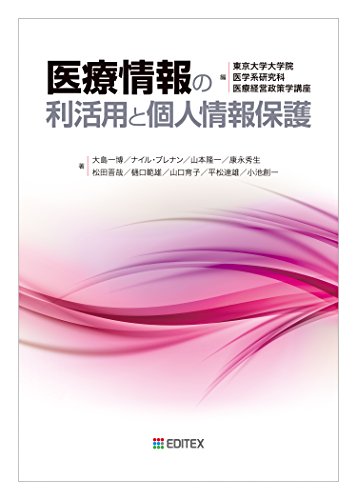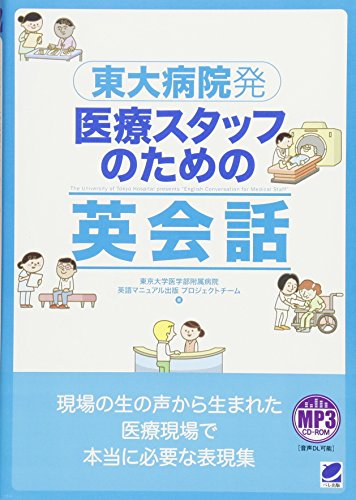1 0 0 0 OA 大日本史料
- 著者
- 東京大学史料編纂所 編
- 出版者
- 東京大学
- 巻号頁・発行日
- vol.第12編之20, 1918
- 著者
- 鹿島 久嗣 Hisashi Kashima 東京大学
- 雑誌
- 人工知能学会誌 = Journal of Japanese Society for Artificial Intelligence (ISSN:09128085)
- 巻号頁・発行日
- vol.28, no.1, 2013-01-01
1 0 0 0 OA サステナnew
- 著者
- 東京大学サステイナビリティ学連携研究機構
- 出版者
- 東京大学
- 巻号頁・発行日
- no.(38), 2016-03-10
1 0 0 0 OA 図書館の窓
- 著者
- 東京大学附属図書館広報委員会
- 出版者
- 東京大学
1 0 0 0 東京大学工学教程
- 著者
- 東京大学工学教程編纂委員会編
- 出版者
- 丸善
- 巻号頁・発行日
- 2013
- 著者
- 東京大学工学教程編纂委員会編 廣瀬明著
- 出版者
- 東京大学
- 巻号頁・発行日
- 2017
1 0 0 0 OA 学校組織の存立メカニズムに関する研究-高等学校の階層構造と学校組織-
- 著者
- 苅谷 剛彦 Kariya Takehoko 東京大学大学院 Graduate School University of Tokyo
- 雑誌
- 教育社会学研究 = The journal of educational sociology (ISSN:03873145)
- 巻号頁・発行日
- vol.36, pp.63-73, 1981-09-12
The problems of "school as organization" have been studied mainly from the viewpoint of school administration and education administration, in the field of educational research in Japan. But such studies have taken interest in the organization of school staff to rationalize school administration. Therefore they have not treated the more elemental problem - How do schools organize the behaviour and learning activities of their pupils ? This article aims to explore its elemental mechanism of school organization, forcusing on Japanese high schools. In the social context which contain the school organization objectively, the school staff members organize the educational activities subjectively. How do they organize the school ? It is the problem for me to explore the mechanism. At the first, I review the study of Ronald Kings "School Organization and Pupil Involvement". Then I point out the important point of his study. It is that he treated organizing schools as teachers' subjective "action". And I point out the limit of his study. It is that his analysis was based on the static bureaucratic model. To get over the weakness, I look into the decision-making process about organizing educational activities. For this purpose, I review the study of March, J.G. & Simon, H.A.s' Organization". They pointed out that the decision-making is based on staffs "definition of situation". And based on the study of Becker, H.S. et al., I point out that "group perspective" orientate "definition of situation". So I can say that teachers' group perspectives control the decision-making process about organizing educational activities. After reviewing such studies, I propose the hypothetical model which can explain the mechanism of Japanese high school organization in the schools' hierarchical structure dynamically.
1 0 0 0 医療情報の利活用と個人情報保護
- 著者
- 東京大学大学院医学系研究科医療経営政策学講座編 大島一博 [ほか] 著
- 出版者
- EDITEX
- 巻号頁・発行日
- 2015
1 0 0 0 東大病院発医療スタッフのための英会話
- 著者
- 東京大学医学部附属病院英語マニュアル出版プロジェクトチーム著
- 出版者
- ベレ出版
- 巻号頁・発行日
- 2016
1 0 0 0 「金融情報学:ファイナンスにおける人工知能応用」
- 著者
- 関 和広 水田 孝信 八木 勲 落合 友四郎 酒井 浩之 和泉 潔 甲南大学知能情報学部 スパークス・アセット・マネジメント株式会社 神奈川工科大学情報学部 大妻女子大学社会情報学部 成蹊大学理工学部情報科学科 東京大学大学院工学系研究科
- 雑誌
- 人工知能
- 巻号頁・発行日
- vol.32, 2017-11-01
1 0 0 0 OA 文脈理解とAI (<特集>「次世代自然言語処理技術」)
- 著者
- 堀 浩一 石崎 俊 Koichi Hori Shun Ishizaki 東京大学先端科学技術研究センター 電子技術総合研究所推諭システム研究室 Research Center for Advanced Science and Technology University of Tokyo Machine Inference Section Electrotechnical Laboratory
- 雑誌
- 人工知能学会誌 = Journal of Japanese Society for Artificial Intelligence (ISSN:09128085)
- 巻号頁・発行日
- vol.3, no.3, pp.312-318, 1988-05-20
- 著者
- 五十嵐 悠紀 五十嵐 健夫 鈴木 宏正 Yuki Igarashi Takeo Igarashi Hiromasa Suzuki 東京大学大学院工学系研究科 東京大学大学院情報理工学系研究科:JST ERATO 東京大学大学院工学系研究科 Dept. of Engineering The University of Tokyo Dept. of Information Science and Technology The University of Tokyo:JST ERATO Dept. of Engineering The University of Tokyo
- 雑誌
- コンピュータソフトウェア = Computer software (ISSN:02896540)
- 巻号頁・発行日
- vol.26, no.1, pp.51-58, 2009-01-27
"あみぐるみ"は毛糸を使って作るぬいぐるみであるが,毛糸の編み方によって形状をデザインしていくため,初心者にはデザインすることが困難である.我々は3次元モデリングプロセスにインタラクティブな物理シミュレーションを組み合わせることであみぐるみを効率的にデザインできるモデラーを作成した.本システムは自動で編み目を計算してあみぐるみモデルをシミュレーション結果として提示するため,初心者にでも直感的にデザインでき,編み図も容易に得ることができる.また,初めてあみぐるみに挑戦する初心者でも製作手順を容易に理解できるようにするために,製作手順を視覚的に提示する製作支援インタフェースも備えた.あみぐるみ初心者でも容易にオリジナルなあみぐるみを作成できることを確認したので報告する.
- 著者
- 神嶌 敏弘 松尾 豊 Toshihiro Kamishima Yutaka Matsuo 産業技術総合研究所 東京大学
- 雑誌
- 人工知能学会誌 = Journal of Japanese Society for Artificial Intelligence (ISSN:09128085)
- 巻号頁・発行日
- vol.28, no.3, pp.472-473, 2013-05-01
- 著者
- 佐倉 統 Osamu Sakura 東京大学大学院情報学環 Interfaculty Initiative in Information studies The University of Tokyo
- 雑誌
- 人工知能学会誌 = Journal of Japanese Society for Artificial Intelligence (ISSN:09128085)
- 巻号頁・発行日
- vol.18, no.2, pp.145-152, 2003-03-01
- 著者
- 千葉 勝吾 大多和 直樹 Shogo CHIBA Naoki OTAWA 東洋大学大学院 東京大学 Graduate School of Toyo University University of Tokyo
- 雑誌
- 教育社会学研究 = The journal of educational sociology (ISSN:03873145)
- 巻号頁・発行日
- vol.81, pp.67-87, 2007-11-30 (Released:2017-02-28)
The school system continues to occupy a central position in the system of social distribution. However, the school is changing from a social screening institution, as it was in the 1970s, to a support institution. Schools now tend to support the decision-making of students based on their own academic achievements and career plans. It is difficult for schools to intervene in students' decision-making in the way they did in the 1970s. However, the relationship between student's school records and their academic and career achievements has not been broken down despite the drastic change in this internal process. In this paper, the authors describe this mechanism in the school by investigating one commercial high school in the Metropolitan area. The authors examine data from the "Student Kartes" of all students in 2002. In these documents, teachers record students' academic achievements and their process of career determing. The authors then analyze how students move between the various channels offered by the school to make academic and career choices, and show some typical patterns. The main conclusions are as follows. First, many students failed to attend group counseling formally provided by the school, and teachers need to give individual support to students. Second, ironically, due to the fact that academic affairs were not highly valued at the commercial high school and that academic competition was not stiff, students with a strong commitment to school tended to have better achievement than those who had a weak commitment. In that sense, the school, as a support institution, also functions as a social screening institution.
- 著者
- 萩谷 昌己 Masami Hagiya 東京大学大学院情報理工学系研究科 Graduate School of Information Science and Technology The University of Tokyo
- 雑誌
- 人工知能学会誌 = Journal of Japanese Society for Artificial Intelligence (ISSN:09128085)
- 巻号頁・発行日
- vol.23, no.3, pp.404-414, 2008-05-01
1 0 0 0 IR 〈亡霊〉は誰にたたるか : 又吉栄喜「ギンネム屋敷」論
- 著者
- 村上 陽子 Murakami Yoko 沖縄大学地域研究所 東京大学大学院総合文化研究科
- 出版者
- 沖縄大学地域研究所
- 雑誌
- 地域研究 (ISSN:18812082)
- 巻号頁・発行日
- no.13, pp.119-132, 2014-03
「ギンネム屋敷」には、レイプ、従軍慰安婦、沖縄戦、民族差別など、さまざまな主題が書き込まれている。「沖縄人」の主人公「私」をはじめ、「朝鮮人」、「米軍人」、「ナイチャー二世」など、民族性を強く帯びた男性登場人物の語りによって構成されるこのテクストの中で、レイプの被害者としてあらわれる女性登場人物は沈黙を強いられている。そのため、従来「ギンネム屋敷」の男性登場人物が、帝国主義や植民地主義、冷戦構造をふまえた関係を形成している点が注目されてきた。その一方で、女性登場人物の位相は十分に論じられることがなかった。それを踏まえて、本稿では女性登場人物の位相を詳細に分析していくことにする。沈黙を強いられる女性たちはテクストの中で空所化され、男性の言葉によって意味付けられていく。だが、彼女らはときに、他者の言葉によって表象され、統御される以上の存在となってあらわれる。本稿では、そのような意味付けられない女性たちの、あるいは言葉を奪われた死者たちの回帰を〈亡霊〉と呼ぶ。〈亡霊〉が物語を構築する語りの主体に取り憑き、物語空間を飛び交っていることをテクストの分析を通して明らかにしていく。語りの主体がすでに〈亡霊〉に取り憑かれていたのだとすれば、テクストから排除されていた彼女たちの声を、物語を構成する言葉の中に潜勢するものとして読み直すことが可能となるだろう。The themes of Matayoshi Eiki's "Ginnemu yashiki" varies from rape, "comfort women", Battle of Okinawa, and ethnic discrimination. This text consists of the narratives of male character with strong racial traits. Female characters are, in contrast, forced to bear the silence, and described as victims of wars and rapes. Therefore, previous studies have focused on the relationship among male characters and have critically discussed structural outline of imperialism, colonialism, and cold war. On the other hand, issues of women have been left unexamined.Now therefore, I examine the phases of female character. Female characters of those forced to be silent become the blank of the text inside. Male characters represent her words and attempt to fill up the blank. However, those forced to be silent have already gotten into male characters, the narrator of the story, and are not just being represented by the word of others. In this study, I call these deprived of their words and obsess narrating agents as "disembodied spirit" and articulate their influence on the narratives of agents. Through rereading this piece, I reexamine the issue of female characters of those remain unexplored and argue that they present in the text.
1 0 0 0 OA 大日本史料
- 著者
- 東京大学史料編纂所 編
- 出版者
- 東京大学
- 巻号頁・発行日
- vol.第6編之21, 1924
- 著者
- 東京大学附属図書館所蔵資料展示委員会
- 出版者
- 東京大学附属図書館
- 巻号頁・発行日
- 2012-10-18
主催: 東京大学附属図書館 ; 会期・会場: 平成24年10月18日-11月16日・東京大学総合図書館
1 0 0 0 IR ソ連文化を記述する : 歴史の記憶化とショスタコーヴィチ研究の現在
- 著者
- 梅津 紀雄 Norio UMETSU 東京大学
- 出版者
- 日本ロシア文学会
- 雑誌
- ロシア語ロシア文学研究 = Росия-го Росия-бунгаку кэнкю (ISSN:03873277)
- 巻号頁・発行日
- no.34, pp.23-31, 2002-01-01
This paper treats the book called Testimony : The Memoirs of Dmitri Shostakovich and analyses the dispute about the authenticity of this book. Testimony was published in English in 1979, four years after composer's death, in the United States, as a memoir of the composer, by Solomon Volkov. Relatives and close friends of Shostakovich readily charged Volkov that his book was a fake, and that he was not a close friend of the composer. From their point of view, Volkov's act was an arrogation of their right to speak his private life, their right to interprete his works. In 1994 Issak Glikman, a close friend of Shostakovich, published letters of Shostakovich addressed to him with detailed annotations. An american musicologist Richard Turuskin criticized Glikman. He wrote that Glikman's annotations are so detailed that they do not allow readers to have their own interpretation. Glikman went so far as to say, "the memory of Shostakovich is sacred to me". Glinkman's annotations attempted to return posesssion of the composer's memories to their rightful owners and to recover the rights to interpret the lire and works of Shostakovich from less intimate acquaintances. But Volkov and his followers try to emphasize the connections between Volkov and Shostakovich. In Testimony, and in Volkov's followers' Shostakovch Reconsidered, there are many photographs of Volkov with Shostakovich, and Volkov with friends of Shostakovich. Thus they use the same logic as Glikman to prove the authentieity of his "testimony". Today, regardless of its doubtful authenticity, the impression of Testimony constitutes a part of our collective memory about Shostakovich's life and times. The myth of "the sacrificied composer" has a deep relationship with this collective memory. But now we must ourselves dispel the myth of Testimony.

